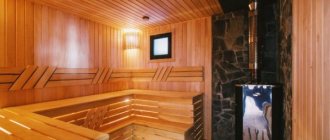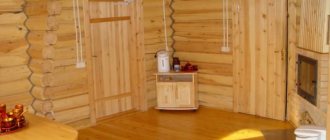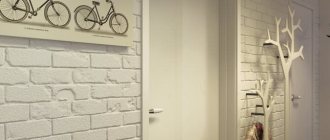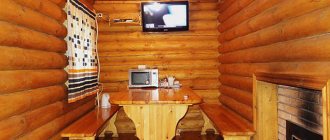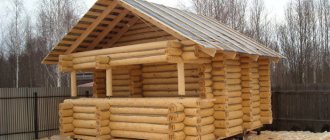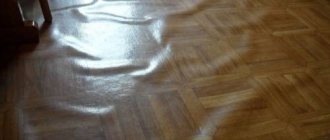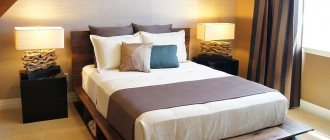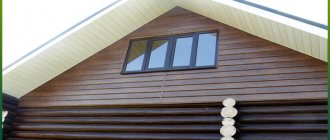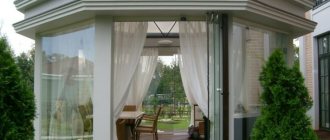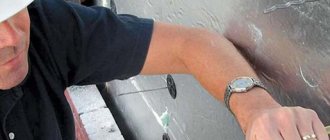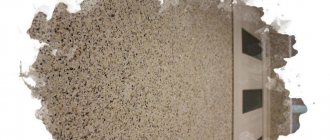Production
It is produced by the spunbond method from a polymer melt (usually polypropylene powder or granules) without the help of weaving machines.
- Streams of liquid polypropylene pass through a spinneret spinning machine, at the exit (from thin holes - spinnerets) from which threads or fibers are obtained. They are immediately placed on a conveyor to form a web.
- The fabric can be formed in different ways - by needle piercing, chemical impregnation or thermal bonding (hot air) on a machine with two rotating shafts through which the fiber is passed.
- Next, the material is impregnated with special compounds (optional).
- Available in different densities and thicknesses (the higher the density, the thicker), in rolls of different widths.
- It can be produced in various colors (dyes are added to the polymer melt), and the design can also be applied to the finished canvas.
Types of covering material
Gardeners are sometimes faced with a difficult choice of covering material. It comes in white, black, two-color. The material differs in different densities and prices.
In recent years, two-layer material has appeared on sale. New colors have also appeared with different combinations: black and white, black and yellow, white and red.
- The yellow side repels insects.
- Red accumulates additional heat.
- The black side of the material prevents weeds from growing and is used as mulch.
Another new product of recent years is spunbond foil strips. The silver surface improves plant lighting due to reflection.
Photosynthesis is activated and crops develop faster. In addition to the silver-black type of spunbond, a silver-white material is produced, which improves the growth of green wards and additionally protects against freezing.
Properties and types of Spunbond
The properties and scope of application of spunbond largely depend on such an indicator as density.
Depending on the type of fiber bonding, the material can be of varying thickness and density - from 15 to 600 g/m2. Denser types (over 150 g/m2) are usually needle-punched; the density of thermally bonded fabric, as a rule, does not exceed 150 g/m2.
in the photo there is a white spandex
The main characteristics of spunbond are:
- environmentally friendly and non-toxic. Consists of 100% synthetic fibers, bonded without the use of glue, does not emit hazardous substances even when exposed to high temperatures;
- ease. Even the densest types have little weight;
- strength and wear resistance. Does not rot or mold, does not corrode;
- maintains strength both in dry and wet conditions;
- permeability. Permits air and steam, does not create a greenhouse effect;
- low electrical conductivity. The material does not conduct electric current and does not accumulate static electricity;
- ability to retain heat. It is an excellent heat insulator;
- homogeneity of structure;
- resistance to acids and alkalis;
- inertness towards chemicals. Does not react with them;
- resistance to high and low temperatures and their changes. Does not change physical properties at - 55 °C and, with additional processing, has heat resistance up to 130 °C;
- low degree of flammability and flammability;
- availability. It is inexpensive and produced in large quantities;
- ease of use. The material is easy to cut and process, the edge does not crumble.
The use of additional processing makes it possible to obtain materials with new properties:
- agrotextiles or agrofibre. It contains ultraviolet stabilizers that neutralize the effects of rays (designated as SUF spunbond). It does not decompose when exposed to the sun;
- multi-colored spunbond. It contains dyes, with the help of which the fabric can be produced in various colors for decorative and other purposes;
- laminated. On a polypropylene base that does not allow moisture and air to pass through.
Spunbond or polyethylene film
Perhaps some summer residents still have doubts about switching to non-woven material. Many continue to use polyethylene for winter shelters and greenhouses. Leaving aside the price issue, let's figure out what is better: spunbond or film?
| Spunbond | Polyethylene film |
| Long service life without the need to clean up at the end of the season | Quickly degrades under ultraviolet rays and temperature changes |
| Good breathability ensures the necessary air circulation and prevents condensation | Does not allow air to pass through, so there is a risk of shoots and buds dampening off, mold development, and condensation formation |
| Atmospheric precipitation easily penetrates through the material, which simplifies the care of plantings | Rainwater accumulates on the film, making it heavier, while the soil remains dry |
| High resistance to mechanical stress | Low wear resistance, easily damaged by sharp edges of the frame and under the influence of wind |
From the presented analysis we can conclude that polyethylene film is an obsolete material that is unable to create optimal conditions for the growth and development of plants.
Spunbond application
All the unique properties of this material allow it to be used in many areas - from construction to medicine.
Agriculture
Spunbond is the most popular covering material; it is produced under different brands - Lutrasil, Agrotex, Agrolux, etc.
They may differ in density and color, and types of additional processing. Is used for:
- protecting plants from frost, precipitation, weeds;
- promotes faster soil warming and sprouting;
- also allows you to increase the time between waterings.
In gardening and vegetable gardening, thermally bonded spunbond with a density of 15 to 80 g/m2 is usually used.
On a note
Agrofibre with SUF can be white or black. Black spunbond non-woven material is used for mulching - covering the soil to regulate temperature and humidity, and getting rid of weeds. White - for protection from frost and heat.
Advantages of spunbond as a covering material for greenhouses, greenhouses and beds:
- Light weight does not in any way interfere with the growth of even the thinnest and weakest shoots.
- Air and light permeability (indicator depends on density) or impermeability. Depending on the needs, various materials are used.
- Allows you to create a special microclimate, protect the soil from drying out and increase the periods between watering.
- Thermal insulation properties allow you to extend the growing season and protect against frost.
- Protects against insect pests.
- Doesn't rot.
- Does not react with pesticides and other chemicals.
- Does not emit toxins and does not harm the future harvest.
- It allows water to pass through and does not allow precipitation to accumulate on the surface and put pressure on plants (unlike polyethylene).
- Protects the soil from erosion (blown away by the wind).
- Softness and plasticity make it possible to cover frames (greenhouses) of various shapes and designs with this material.
Special types of spunbond are produced for the agricultural sector:
- foil black and white (to reflect light);
- two-color - black and white, red and white (to accumulate heat), black and yellow (to repel insects).
Construction
In the construction of houses, spunbond is used as an insulating layer - on its basis, vapor-permeable moisture and windproof or vapor barrier membranes (from dense materials) are made. An intermediate layer between the wall surface and the finish is made from a thin and less dense material to prevent cracking.
In road construction (and in landscape design) it is used as a cushioning layer for drainage.
Read about: Hollophan insulation
Medicine and workwear
The low cost of spunbond allows it to be used for the production of disposable products, for example, gowns, shoe covers, headgear (caps), masks, disposable kits for surgical operating departments. This material can be sterilized (radiation, steam, autoclaving), repels water and dirt, and allows air to pass through well, creating comfortable working conditions. Products made from a special laminated two-layer spunbond have blood-repellent properties.
Spunbond fabric is indispensable for sewing workwear for the service sector and catering. It is used to make aprons, trousers, and robes for beauty salons, canteens, and restaurants.
In ordinary clothing, it plays the role of a cushioning material, making clothing parts more rigid and allowing them to retain their shape without stretching.
Used as a lining material in the manufacture of leather bags, purses, purses and sports bags.
Production of hygiene products
The hypoallergenicity, softness and good permeability of spunbond make it indispensable in the production of feminine and children's hygiene products (pads and diapers) as a top layer.
Spunbond for furniture
Lightweight and inexpensive material is used as a separator between upholstery and filler, as a cushioning material over a spring block. They also cover the back walls and bottom of furniture.
Promotional Products
Various souvenir bags, cases, and cases are also made from this material.
They are more durable and environmentally friendly compared to polyethylene, and also look more presentable. Available in various densities and colors, a pattern or company logo can be applied.
Filters
Various filters are made from spunbond - for chemicals, air filters for cars, for respiratory protection (respirators), for vacuum cleaners.
Spunbond packaging and storage systems
It is used to make packaging, cases and organizers for storing clothes, linen and various household items, which protect products from dust and are well ventilated.
Nowadays, whole sets of beautiful colors are being produced that will help organize order in the house and give the interior a stylish and cozy look - these are covers for dresses and men's suits, shoes, bedding and cosmetics, made in the same color scheme.
Properties of covering material
When using the material in a garden located in the Moscow region, I draw attention to the characteristics of the canvas:
- the material retains heat, preventing cold air flows from penetrating through it;
- increased breathability in the space created;
- the canvas is uniform over the entire surface - this allows you to create a microclimate inside a closed space: the necessary humidity and temperature;
- light passes through the material;
- the light weight of the material allows you to cover young shoots of crops without exerting pressure, and therefore without causing harm;
- the strength of the material allows it to be wrinkled and washed;
- resistant to low and high temperatures;
- the surface of the canvas is resistant to harmful microorganisms, causing fungi and bacteria to die;
- pesticides and other compounds will not harm the material;
- the material does not emit harmful substances into the atmosphere - it is an environmentally friendly product.
Which side should the spunbond be placed on the ground?
At the beginning of using spunbond, I did not attach any importance to which side to cover the crops with. Then I accidentally came across a discussion among Internet users. At one of the forums dedicated to gardening, summer residents shared their experiences.
It turns out that some manufacturers write on the label where the top and inside sides of the fabric are. But most types of spunbond are produced without explanation.
Any side of the covering material allows water to pass through, but smooth - to a lesser extent, pimply - to a greater extent.
When constructing a greenhouse, spunbond retains all its properties, including thermal insulation, but it is better to have a pimpled surface on the outside and a smooth inside.
A video will be a good help before purchasing and using spunbond. It tells how to strengthen the covering material in the garden bed:
Product care
Reusable spunbond products (for example, covers and organizers for linen and clothing) cannot be machine washed.
- It is advisable to dry clean - wipe with a cloth or vacuum.
- They can be washed by hand, carefully, without using powder or other detergents.
- Do not iron, as the material will stick to the iron.
- To straighten such a product, you can treat it with steam or simply hang it.
Disposable products do not require maintenance; after use, they are simply thrown away.
An inexpensive material with unique properties has won the trust of many manufacturers and is used in almost every area of human life.
Spunbond - what is it, application in gardening, which side to cover:
© 2021 textiletrend.ru
How to use spunbond in gardening
in spring
To quickly warm up the ground, just lay the canvas on the snow or soil. Heat is generated under the material and the surface of the earth, which is transferred to the soil.
When the earth warms up, I don’t remove the spunbond too far. I plant radishes and lettuce in the greenhouse, covering the seedlings additionally like a blanket.
Then comes the turn of zucchini, cucumbers, and pumpkins. Warm-loving crops begin to grow faster under cover. And if there is a danger of frost, and the temperature at night approaches zero, then in the greenhouse and under the spunbond the plants do not feel the cold.
I wrap small pieces of material around dahlia bushes and other flowers that are afraid of night frosts. When the temperature drops, even a shelter over the plants can play a big role - the spunbond will not let the cold air flow through, retaining heat.
In summer
I grow sweet peppers in a large greenhouse, and from spunbond I build a small greenhouse where the hot peppers grow. When it’s hot, I lift the material up on the side for ventilation.
- The canvas transmits light perfectly.
- Demonstrates excellent thermal insulation.
- I water from the side and also from above directly onto the material. When watering, I lightly press down in the right place so that it is there that water gets on the bush and the ground.
Black spunbond is used to mulch the soil of strawberries and wild strawberries and protect it from various birds and pests: rodents, slugs, mole crickets.
And also, weeds do not grow under the shelter and there are practically no erosion processes that occur in strong windy weather. In hot weather, the root system does not overheat, and in cold weather it is warmed up due to the covering material.
Important! Spunbond allows water to pass through during irrigation or rain, but the evaporation of moisture from the surface of the earth is greatly slowed down.
I also use the cloth for mulching gooseberry and currant bushes. Previously, branches with berries came into contact with the ground. In humid weather there was a risk of infection with gray mold, but with the use of spunbond the probability of infection has decreased significantly.
in autumn
I don't remove the spunbond. The canvas plays the role of a reliable shelter when the first frosts occur in October in the absence of snow cover. Perennial plants with such protection more easily go into a stage of deep dormancy.
in winter
In the winter months, including March, when spring is in no hurry to take hold, spunbond continues to protect crops. A “spunbond blanket” warms young seedlings of fruit trees and shrubs during cold weather and weakens the effect of temperature changes.
What covering material is best for gardening and vegetable gardens?
It all depends on the specific goal. It is more profitable to use film for greenhouses, as it allows heat to pass through. But it will have to be removed for watering and airing the soil. And you can cover seedlings with spanboard without fear that rain will cause the material to sag and break the plants underneath.
Spunbonds are effective in preserving garden crops from frost and precipitation.
However, frame buildings made from spunboards will be expensive, since high-density material will be required. Smart gardeners use both of these materials. In early spring - film, and in the warm season - spanboard or similar products.
An alternative to commonly known materials
Agrofabric as a covering material for gardening has become widespread due to the protection of beds from weeds, ease of use for mulching the soil, and durability. But its main task is to preserve moisture, provide air access, and prevent the soil from drying out. It is also suitable for greenhouses, but only as a surface ground material.
Compound
Spunbond material is made from polymer fibers and may include:
- polyester threads . Agrofabric made from them retains heat well, allows air and moisture to pass through, and is resistant to sunlight. The weight of the canvas ranges from 12 to 300 g/m2;
- combinations of PET/PP, PET/PE, PET/PA and PET/CoPET fibers in different ratios. Biko material weighs from 20 to 250 g/m2. It transmits sunlight, air, and water well;
- polypropylene in spunbond is combined with UV filters. The weight of the canvas is from 8 to 200 g/m2. The material is wear-resistant and holds heat well.
Spunbond material has different densities: from 17 to 60 g/m2.
